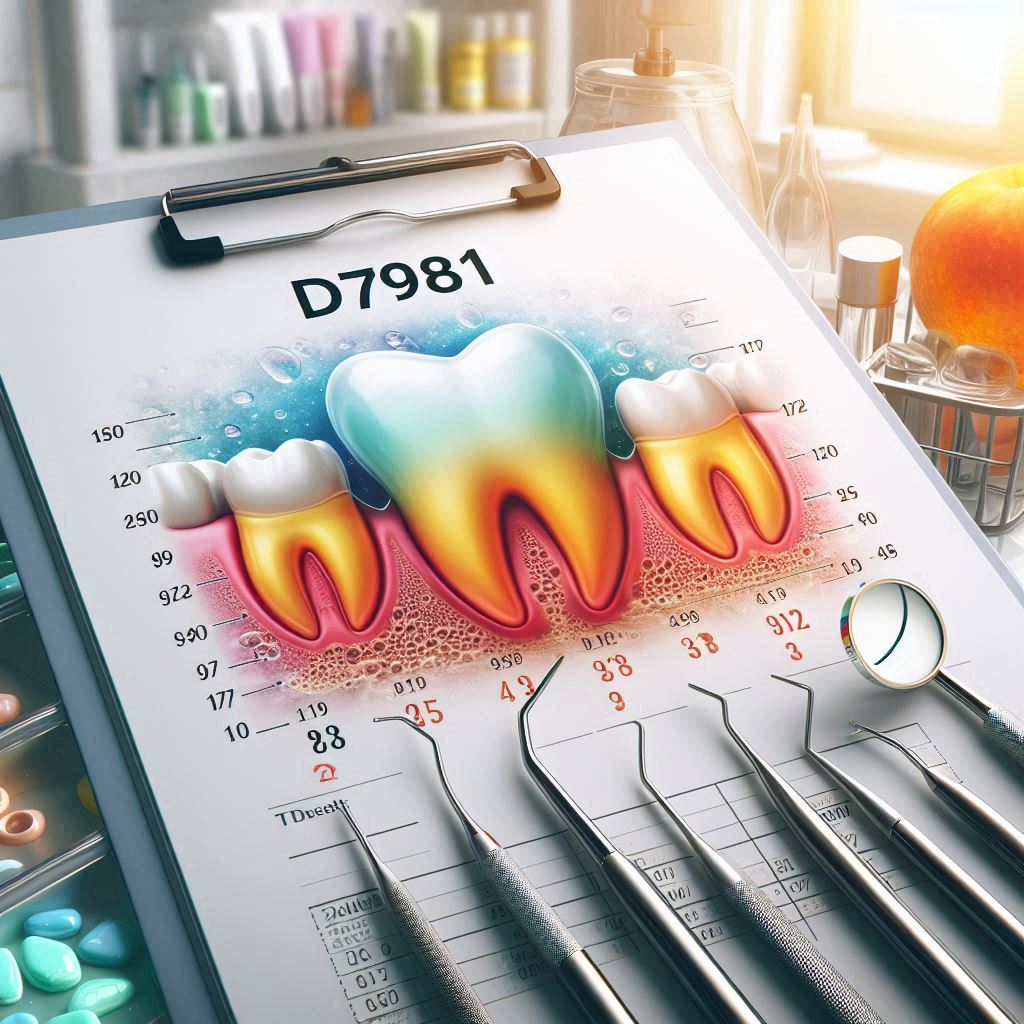D7981 Dental Code
Soft tissue lesions in the oral cavity can range from harmless fibromas to potentially malignant growths. The D7981 dental code is specifically used for the surgical excision of soft tissue lesions, a critical procedure in oral surgery. This guide provides an in-depth exploration of D7981, including indications, techniques, recovery, and billing considerations.
Whether you’re a dental professional seeking detailed procedural insights or a patient preparing for surgery, this article covers everything you need to know about D7981.

2. Understanding the D7981 Dental Code
Definition and Purpose
The D7981 code falls under the American Dental Association (ADA) Current Dental Terminology (CDT) and refers to the excision of benign or reactive soft tissue lesions. This includes:
- Fibromas
- Mucoceles
- Pyogenic granulomas
- Hyperplastic tissue
When Is D7981 Used?
D7981 is applicable when:
- Lesions cause discomfort or functional impairment.
- Biopsy is required for diagnostic purposes.
- Cosmetic concerns exist (e.g., fibromas on the lip).
3. Types of Soft Tissue Lesions Requiring Excision
| Lesion Type | Description | Common Locations |
|---|---|---|
| Fibroma | Benign fibrous tissue overgrowth | Cheek, tongue, lips |
| Mucocele | Salivary gland obstruction cyst | Lower lip, floor of mouth |
| Pyogenic Granuloma | Vascular overgrowth, often bleeds easily | Gums, tongue |
| Leukoplakia | White precancerous patches | Buccal mucosa, gums |
4. Diagnostic Process Before Excision
A thorough clinical examination and biopsy are essential before performing D7981.
Clinical Examination
- Visual inspection
- Palpation for texture and mobility
- Review of medical/dental history
Biopsy and Histopathology
- Incisional biopsy (partial removal for diagnosis).
- Excisional biopsy (complete removal, coded as D7981).
5. Surgical Techniques for Soft Tissue Excision
Scalpel Excision
- Most common method.
- Provides clean margins for biopsy.
Electrosurgery
- Uses high-frequency electrical current.
- Minimizes bleeding.
Laser Surgery
- Precise, less postoperative pain.
- Ideal for vascular lesions.
Cryosurgery
- Freezes lesions with liquid nitrogen.
- Used for small, superficial lesions.
6. Step-by-Step Procedure for D7981
- Preoperative Preparation
- Review medical history.
- Obtain informed consent.
- Anesthesia Administration
- Local anesthesia (lidocaine with epinephrine).
- Excision
- Incision with a scalpel or laser.
- Removal with margins to prevent recurrence.
- Hemostasis and Suturing
- Electrocautery for bleeding control.
- Absorbable or non-absorbable sutures.
7. Recovery and Postoperative Instructions
- Pain Management: NSAIDs (e.g., ibuprofen).
- Oral Hygiene: Saltwater rinses, avoid brushing near the site.
- Warning Signs: Excessive swelling, pus, or fever.
8. Potential Risks and Complications
- Infection (managed with antibiotics).
- Bleeding (controlled with pressure or cautery).
- Nerve damage (rare but possible in deep excisions).
9. Insurance and Billing for D7981
- Coverage: Often covered if medically necessary.
- Documentation: Requires biopsy report and clinical notes.
10. Case Studies
- Case 1: Fibroma excision with no recurrence.
- Case 2: Pyogenic granuloma removal with laser.
11. FAQs About D7981
Q: Is D7981 painful?
A: No, local anesthesia ensures comfort.
Q: How long does healing take?
A: Typically 1-2 weeks.
Q: Will insurance cover D7981?
A: Yes, if deemed medically necessary.
12. Conclusion
The D7981 dental code is essential for removing problematic soft tissue lesions. Proper diagnosis, surgical technique, and postoperative care ensure successful outcomes. Dentists must document thoroughly for insurance approval, while patients should follow recovery guidelines.


